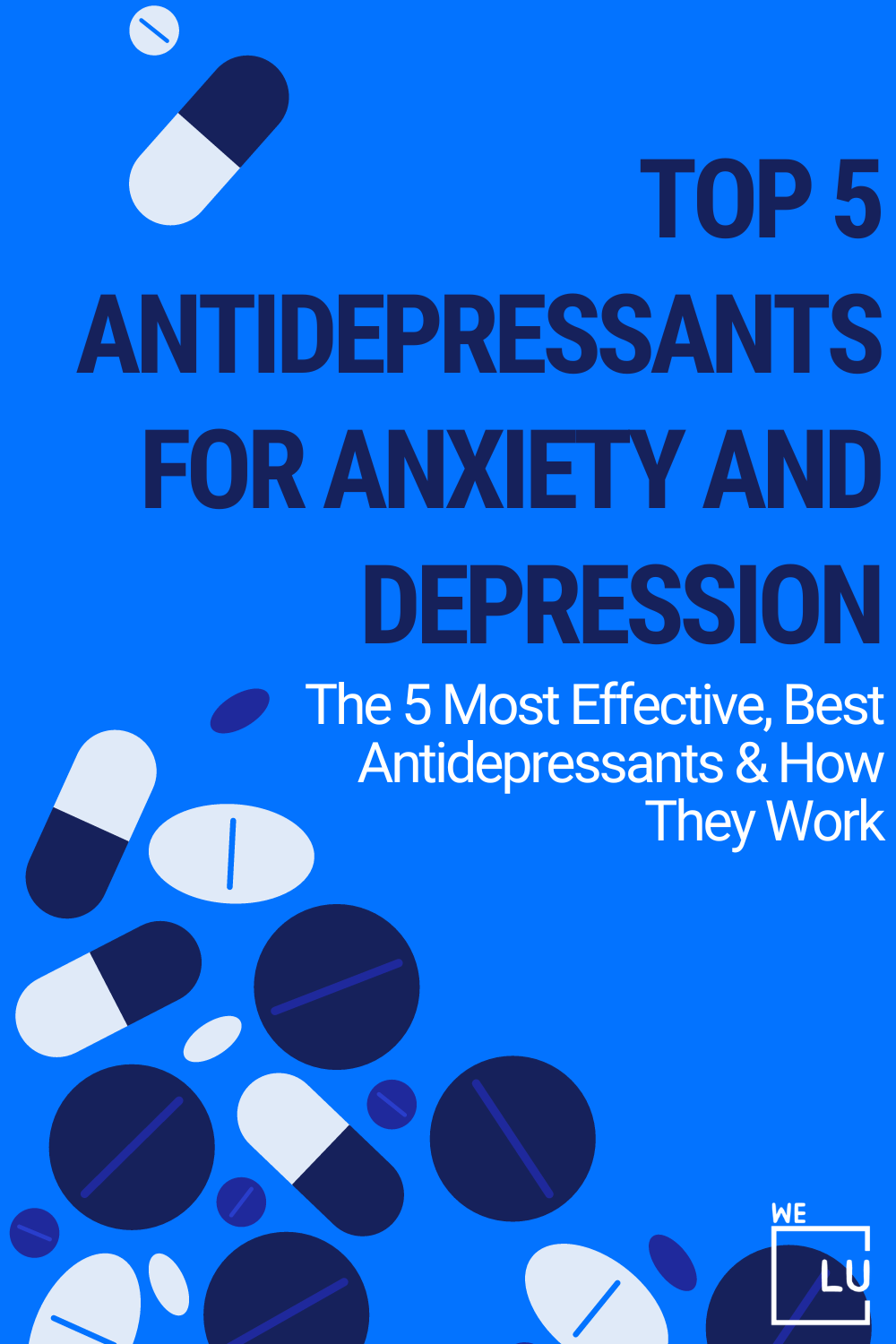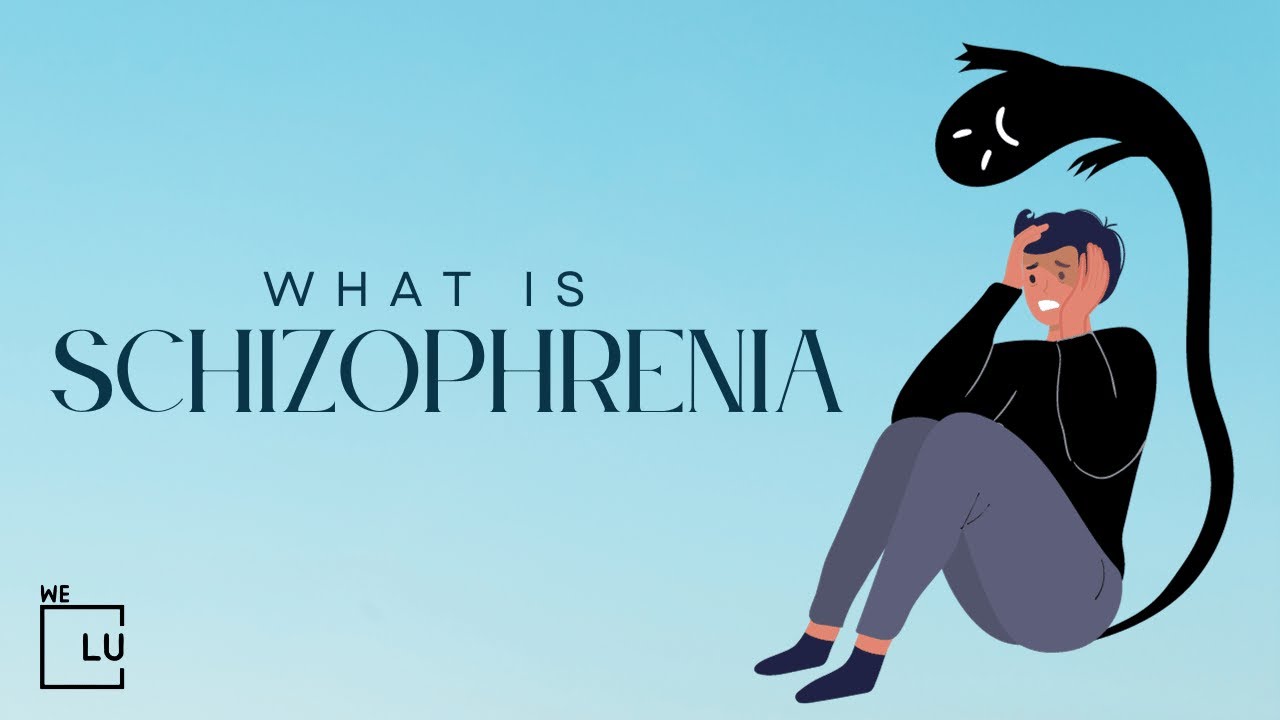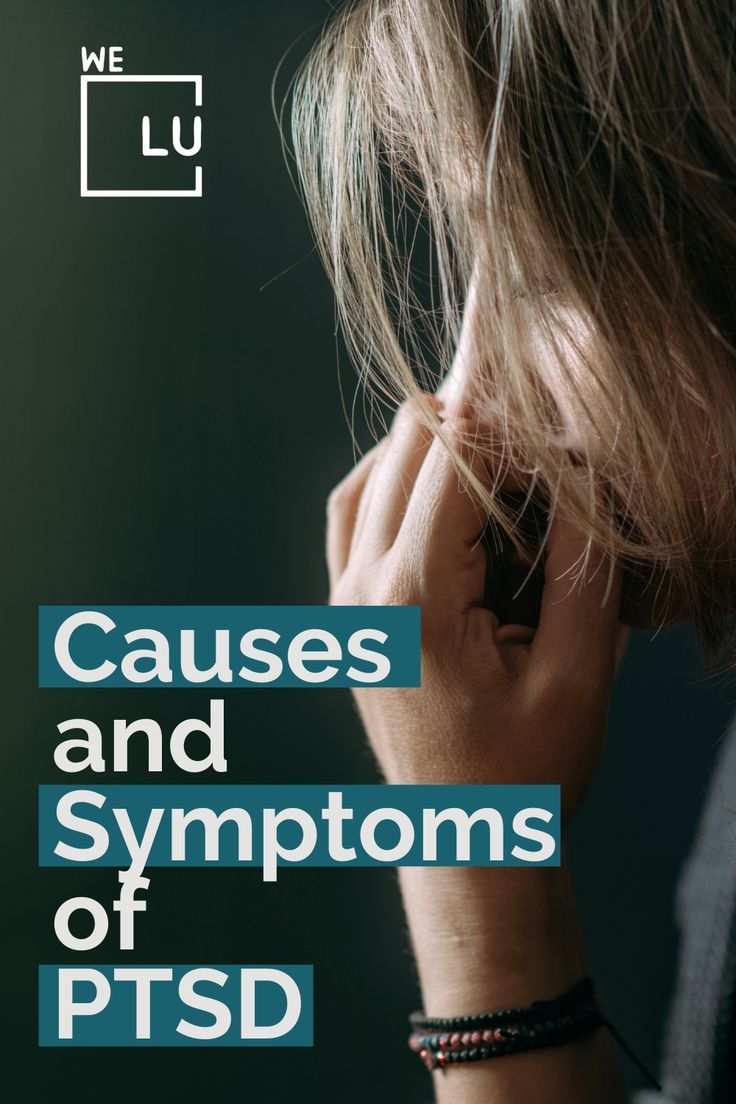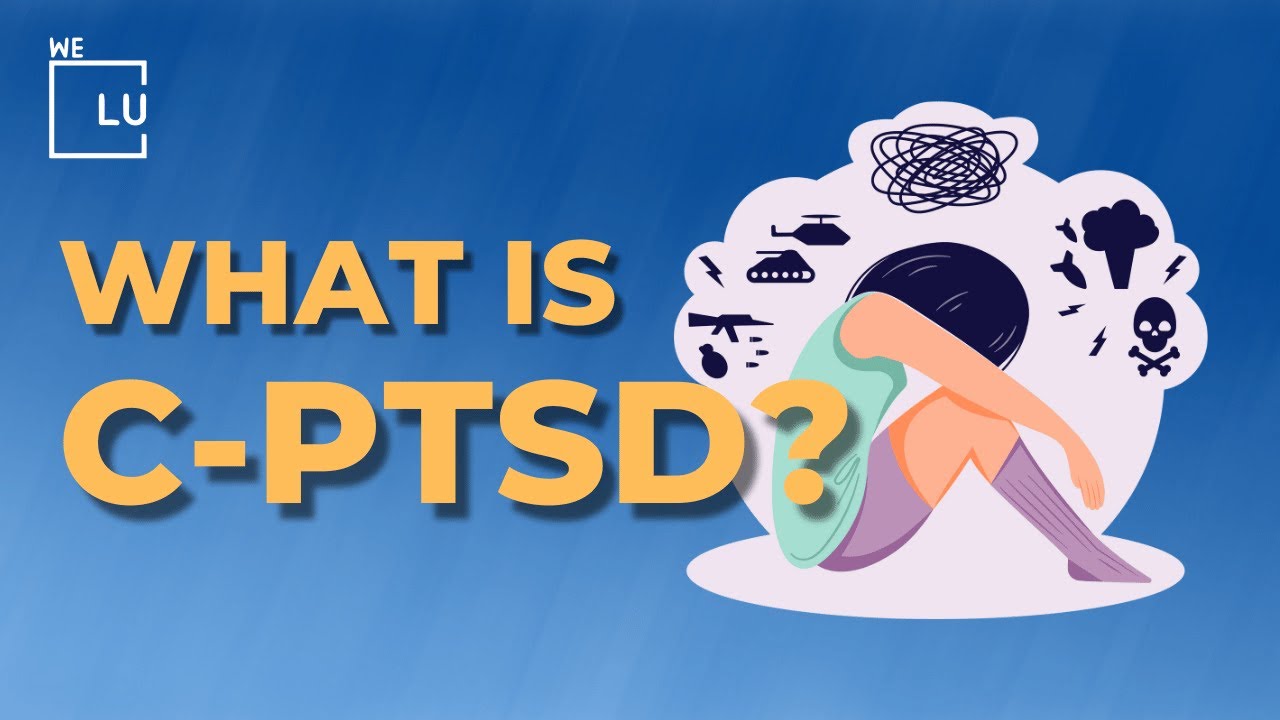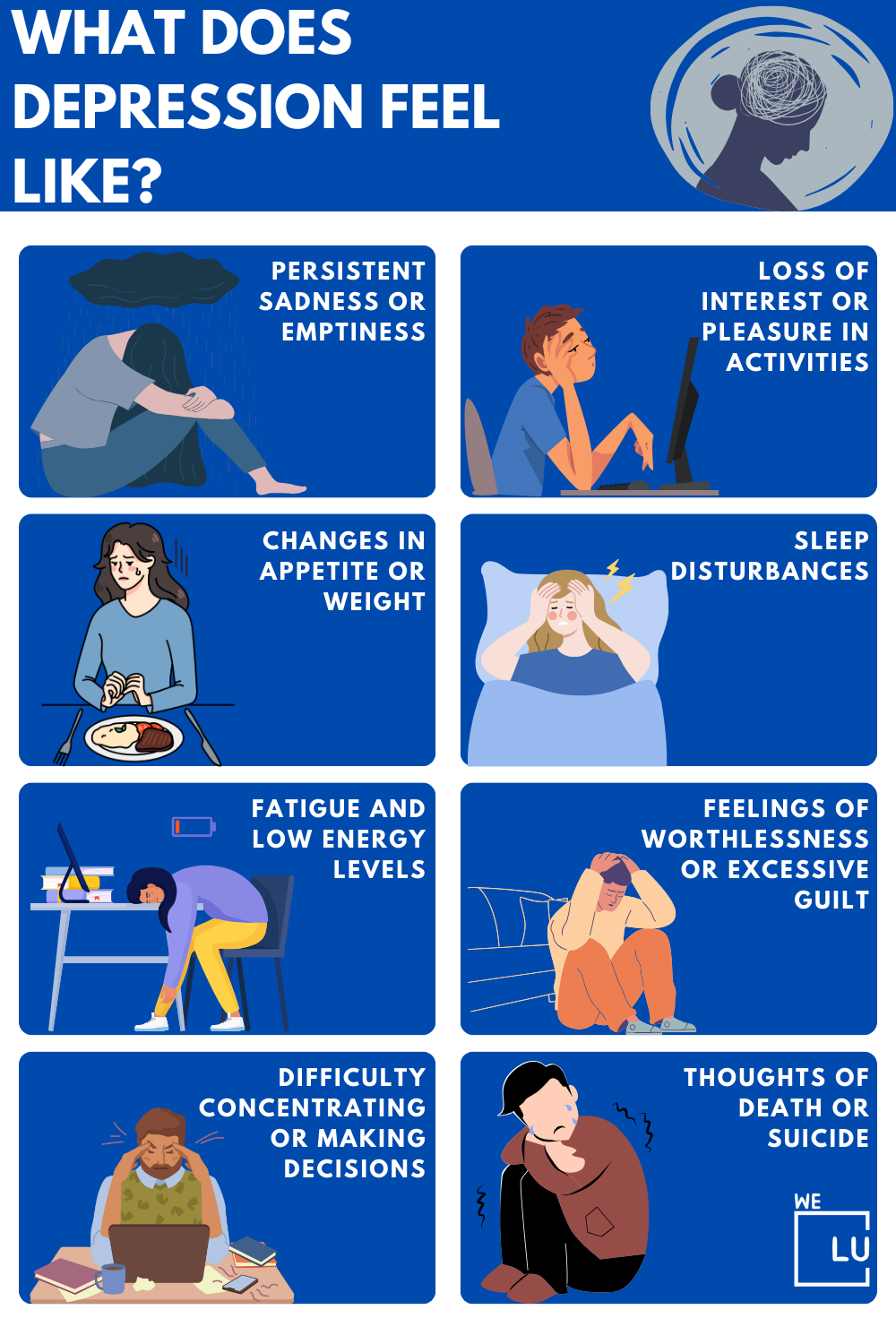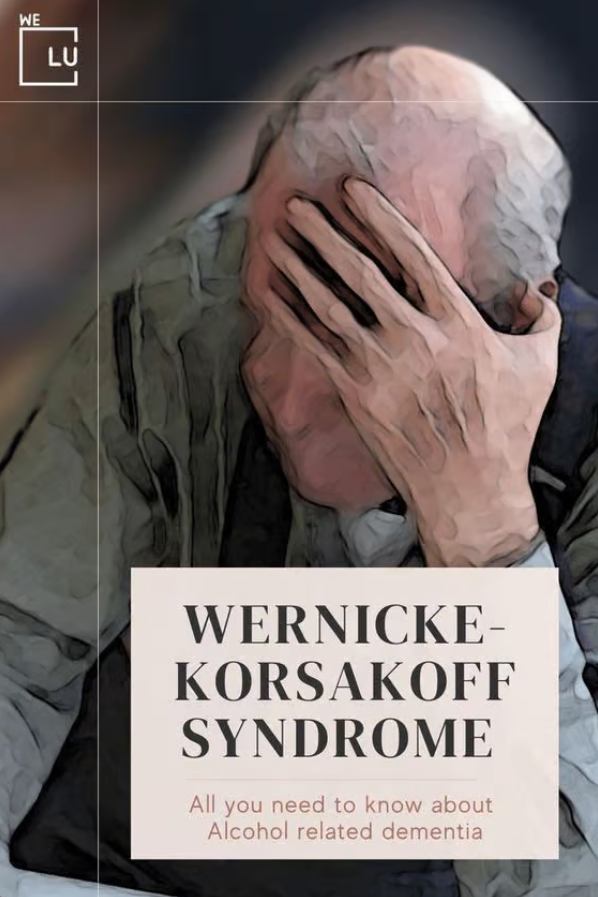Complex PTSD Symptoms Adults Overview
Most people are familiar with post-traumatic stress disorder (PTSD), an anxiety disorder that results from a traumatic event, such as a natural disaster or car accident. However, a closely related condition called complex post-traumatic stress disorder (CPTSD) is becoming more widely recognized by doctors in recent years. CPTSD results from repeated trauma over months or years rather than a single event.
Individuals who have frequently endured traumatic events, such as violence, neglect, or abuse, may be diagnosed with PTSD based on complex PTSD symptoms. Complex PTSD is believed to be more severe if:
- The traumatic events happened early in life.
- A parent or career caused the trauma.
- The person experienced the trauma for a long time.
- The person was alone during the trauma.
- There’s still contact with the person responsible for the trauma.
A child’s development, including their behavior and self-confidence, can change as they get older because it may take years for the symptoms of complex PTSD to be diagnosed. As a result, adults with complex PTSD may lose trust in people and feel separated.
Complex PTSD vs PTSD
Complex PTSD (C-PTSD) often arises from prolonged, repeated trauma or abuse.
- This can result in difficulties with emotional regulation and interpersonal relationships.
- Symptoms may include identity disturbances, feelings of emptiness, and chronic shame.
- More closely linked to disruptions in self-concept and self-esteem.
- It may involve a broader range of symptoms beyond those seen in PTSD.
- Treatment often focuses on addressing core identity issues and relational difficulties.
Post-traumatic stress disorder (PTSD) typically arises from a single traumatic event or a series of traumatic incidents.
- Symptoms include flashbacks, nightmares, avoidance behaviors, hypervigilance, intrusive thoughts, and emotional numbness.
- Emotions may be intense but are often related directly to the traumatic event.
- Generally centered on the trauma itself.
- Treatment often involves exposure therapy, cognitive-behavioral therapy, and medications to manage symptoms.
What Causes Complex PTSD?
Complex PTSD is typically caused by prolonged and repeated exposure to traumatic events, especially when a person feels trapped or unable to escape. Common causes of CPTSD include the following:
- Childhood Abuse: Physical, emotional, or sexual abuse during childhood, especially when the abuse is ongoing or severe.
- Neglect: Chronic neglect, emotional deprivation, or lack of consistent care during childhood.
- Domestic Violence: Sustained exposure to domestic violence or abusive relationships over time.
- Human Trafficking: Victims of human trafficking or forced labor may develop C-PTSD due to ongoing trauma and captivity.
- War and Conflict: Repeated exposure to combat, violence, or life-threatening situations in war zones.
- Long-Term Imprisonment: Extended periods of captivity, imprisonment, or hostage situations.
- Cult or Religious Abuse: Prolonged manipulation, control, and abuse within cults or religious contexts.
- Chronic Bullying or Harassment: Ongoing and severe bullying, harassment, or discrimination.
- Survivors of Chronic Illness or Medical Procedures: Individuals undergoing prolonged medical treatments, surgeries, or chronic illness may also develop C-PTSD.
- Other Prolonged Traumatic Situations: Any situation involving prolonged, severe, and inescapable trauma can contribute to developing Complex PTSD.
Complex PTSD Criteria
The diagnostic criteria for Complex PTSD encompass the following:
- Experiencing distressing visual or emotional flashbacks and vivid trauma memories triggered by specific events.
- Engaging in extreme avoidance behaviors to evade situations or environments that could trigger flashbacks or distressing memories.
- Persistent feelings of insecurity or susceptibility to threats, even in seemingly safe circumstances.
- Demonstrating a pattern of involvement in unstable, dysfunctional, and unsustainable relationships.
- A negative self-perception characterized by profound shame, guilt, and feelings of unworthiness.
- Limited emotional regulation leads to vulnerability to intense anger, frustration, anxiety, and periods of immobilizing distress.
For a diagnosis of complex PTSD, all six symptoms need to be present. Given the frequent co-occurrence of complex PTSD with conditions like depression, anxiety disorders, borderline personality disorder, and substance abuse, mental health professionals will also assess for these issues once the complex PTSD symptoms are identified.
What are The 17 Symptoms of Complex PTSD?
Complex PTSD symptoms can vary, but here’s a simplified list of potential symptoms associated with the condition:
- Emotional Dysregulation: Intense, unpredictable emotions and difficulty managing them.
- Negative Self-Concept: Persistent feelings of shame, guilt, and worthlessness.
- Distorted Self-Perception: Altered self-identity or self-concept, feeling flawed or damaged.
- Interpersonal Difficulties: Challenges forming and maintaining healthy relationships.
- Chronic Feelings of Emptiness: Ongoing inner void or lack of fulfillment.
- Flashbacks and Intrusive Memories: Repeatedly re-experiencing traumatic events.
- Avoidance Behaviors: Efforts to evade reminders of trauma or distressing situations.
- Hypervigilance: Constant alertness and heightened startle response.
- Dissociation: Feeling disconnected from oneself, others, or reality.
- Impaired Trust: Difficulty trusting others due to past betrayals or abuse.
- Loss of Meaning: Sense of purposelessness or loss of meaning in life.
- Difficulty Regulating Emotions: Struggles with managing anger, anxiety, or other emotions.
- Physical Symptoms: Chronic pain, headaches, gastrointestinal issues, or other somatic complaints.
- Changes in Self-Perception: Feeling different from others, altered worldview.
- Feeling Stuck: Feeling trapped in patterns of behavior or thought.
- Impaired Concentration: Difficulty focusing and concentrating.
- Self-Destructive Behavior: Engaging in self-harm or risky behaviors as a coping mechanism.
Not everyone with complex PTSD will experience all these symptoms, and individuals may have varying combinations and intensities. A qualified mental health professional should determine a proper diagnosis and treatment plan.
Top Complex PTSD Symptoms (CPTSD)
PTSD symptoms, as well as an additional set of symptoms, are frequently present in CPTSD patients. The top symptoms may include the following:
- Disturbing thoughts or feelings.
- Dreams related to the events.
- Mental or physical distress to trauma-related cues.
- Attempts to avoid trauma-related alerts.
- Changes in how a person thinks and feels.
- Increased fight-or-flight response.
CPTSD vs PTSD Explained
C-PTSD is a type of PTSD with more intense and long-lasting symptoms. It is often caused by prolonged or repeated trauma, such as abuse, neglect, or multiple traumatic events. When comparing CPTSD vs PTSD, professionals distinguish the heightened level of intense emotions people feel with a CPTSD vs PTSD diagnosis.
People suffering from C-PTSD may have more prolonged symptoms of PTSD, such as intrusive thoughts, flashbacks, nightmares, and depressed moods. They are also more likely to suffer from chronic physical symptoms such as migraines and to have a history of abuse, neglect, or other trauma-related experiences.
C-PTSD can lead to difficulties in personal functioning, such as difficulty forming relationships or attachments or functioning effectively in everyday life. Sufferers will often experience a sense of being emotionally numb or disconnected from their emotions and experiences. They may also experience difficulty regulating their emotions and will often withdraw into themselves cope. C-PTSD can also lead to guilt and shame, with sufferers feeling like something is wrong with them or that they have done something wrong. Sufferers may also experience fear, anxiety, anger, and irritability.

Skip To:
Learn More:
- Free Complex PTSD Quiz. Online Do I Have Complex PTSD Quiz? Fast Easy Pro CPTSD Quiz.
- CPTSD and Relationships
- PTSD from Emotional Abuse
- Acute Stress Disorder Vs PTSD
- Is PTSD a Disability?
- What To Do When Someone With PTSD Pushes You Away?
- Signs, Symptoms, Causes, and Risks of PTSD and Addiction Plus Treatment Options
- What are PTSD Triggers? How To Deal With PTSD Triggers?
- PTSD Therapy Near Me. Post-Traumatic Stress Disorder Guide.
- PTSD and OCD Treatment
How To Find Complex PTSD Treatment Centers Near Me?
To find complex PTSD treatment centers near you, search online using terms like “complex PTSD treatment near me” or “complex PTSD therapist near me,” along with your location. Contact local mental health organizations, clinics, or hospitals to inquire about their services and recommendations for trauma-focused treatment. Ask your primary care physician for referrals or guidance based on your needs. The We Level Up FL mental health treatment center can also help you explore treatment options and mental health resources. Call us today to get started!
World-class, Accredited, 5-Star Reviewed, Effective Mental Health Dual Diagnosis Programs. Complete Integrated Inpatient Rehab with Free Post Discharge Therapy Planning.
CALL (855) 940-6125End the Emotional Pain Rollercoaster. Gain Stability & Happiness Through Recovery Treatment. Start Mental Health Counseling Today. Get Free No-obligation Guidance by Behaviroal Health Specialists Who Understand Mental Health Recovery.
Complex PTSD Symptoms Test
Diagnosing complex PTSD typically involves a comprehensive assessment by a qualified mental health professional. The process may include the following:
- Clinical Interview.
- Diagnostic Criteria.
- Trauma History.
- Psychological Assessment.
- Differential Diagnosis.
- Observation.
- Collateral Information.
- Co-Occurring Conditions.
Only a trained mental health professional can provide an accurate diagnosis. If you suspect you have Complex PTSD, seeking help from a licensed therapist, psychologist, or psychiatrist is crucial for a proper assessment and personalized treatment plan.
CPTSD and Dissociation Disorder Facts
CPTSD Dissociation
Complex PTSD (CPTSD) often co-occurs with dissociation, a psychological defense mechanism where individuals detach from their thoughts, emotions, or surroundings to cope with overwhelming distress.
Dissociation in CPTSD can manifest as:
- Feeling disconnected from oneself.
- Having gaps in memory.
- Experiencing episodes of “zoning out.”
Individuals with CPTSD and dissociation must seek professional help, as addressing both aspects is essential for comprehensive healing and recovery.
Complex PTSD
CPTSD stands for complex post-traumatic stress disorder. It is a mental health condition caused by experiencing or being a witness to a traumatic event. People with CPTSD have difficulty processing the traumatic event and are frequently triggered by reminders of the event.
What is complex PTSD symptoms? Symptoms of CPTSD include flashbacks, intrusive thoughts, difficulty sleeping and focusing, hypervigilance, and avoidance of trauma reminders. Treatments for CPTSD typically include therapy, medication, and lifestyle changes.
CPTSD disorder arises from multiple exposures to trauma. Trauma, an event involving the danger of death, serious injury, or sexual violation, is a significant risk factor for mental illness.
CPTSD Definition
Descriptions of trauma-related mental illness primarily originated from investigations of people exposed to traumas that occurred in adulthood (e.g., military combat) and in single instances (e.g., disasters).
These descriptions led to the definition of post-traumatic stress disorder (PTSD), which informs assessment and treatment after all traumas.
However, clinical observations have suggested that more ‘complex’ types of trauma – a traumatic experience involving multiple events with interpersonal threats during childhood or adolescence (e.g., repeated child abuse) – might result in more severe outcomes than other ‘non-complex’ traumas.
Complex PTSD Somatic Symptoms
Somatic symptoms of Complex PTSD can include:
- Chronic pain or body aches.
- Headaches or migraines.
- Gastrointestinal issues.
- Fatigue or low energy.
- Sleep disturbances.
- Muscle tension or stiffness.
- Heart palpitations or racing heartbeat.
- Changes in appetite or weight.
- Sensitivity to sensory stimuli (light, sound, touch).
- Nausea or dizziness.
These somatic symptoms can arise due to the body’s response to ongoing stress and trauma associated with Complex PTSD.
CPTSD Treatment
Treatment for CPTSD often requires a combination of therapies, medications, and lifestyle changes to find relief. The best treatment for CPTSD is generally recognized as cognitive behavioral therapy, a typical therapy used to help people with CPTSD identify the triggers of their symptoms and develop healthier coping strategies. Mindfulness therapies, such as dialectical behavior therapy, can also help individuals become more aware of their thoughts, feelings, and behaviors and develop a healthier relationship with their emotions.
Medication is also a valuable option for managing symptoms. Medications such as antidepressants, antipsychotics, and mood stabilizers can help lessen the intensity of symptoms and improve sleep, mood, and overall functioning. Along with therapy and medication, lifestyle modifications can also improve symptoms. Relaxation activities such as yoga, tai chi, and meditation can be beneficial in helping to manage intense emotions.
Complex PTSD Life Expectancy
Currently, there is no research indicating that CPTSD deteriorates with age. Nevertheless, without proper treatment, CPTSD symptoms have the potential to escalate over time and affect a person mentally and physically. While limited research is available on the topic, a single study proposes a potential link between trauma, PTSD, and a shortened lifespan.
Complex PTSD Physical Symptoms
The physical symptoms of complex PTSD may arise due to the body’s response to prolonged stress and traumatic experiences inherent to Complex PTSD. Consulting a healthcare professional for a proper assessment and treatment is essential. Here’s a look at some common physical symptoms linked with CPTSD:
- Chronic Pain: Persistent body aches may result from ongoing stress and emotional distress.
- Headaches and Migraines: Triggered or exacerbated by stress and trauma-related tension.
- Gastrointestinal Issues: Irritable bowel syndrome (IBS), stomachaches, nausea, and other gastrointestinal discomfort.
- Sleep Disturbances: Insomnia, nightmares, and disrupted sleep patterns can be caused by hypervigilance and emotional dysregulation.
- Fatigue and Low Energy: Constant emotional turmoil and alertness can cause fatigue.
- Cardiovascular Symptoms: Increased palpitations due to the body’s stress response.
- Sensory Sensitivity: Hypersensitive to sensory stimuli such as light, sound, or touch.
- Dizziness and Lightheadedness: The body’s heightened stress response and changes in blood flow.
- Changes in Appetite or Weight: Stress-related changes in eating patterns may lead to weight gain or loss and fluctuations in appetite.
- Immune System Dysregulation: Prolonged stress associated with CPTSD may weaken the immune system, making individuals more susceptible to illnesses.
- Skin Issues: Stress can exacerbate conditions like eczema, psoriasis, or acne, potentially leading to flare-ups.
- Respiratory Symptoms: Stress and anxiety can trigger rapid or shallow breathing, breathlessness, or asthma-like symptoms.

End the Emotional Pain. Get Your Life Back.
Feeling Depressed, Anxious or Struggling with Mental Health Illness? Get Safe Comfortable Mental Health Dual Diagnosis High-Quality Therapy From Counselors That Care. Begin Your Recovery Now.
Hotline (855) 940-6125Complex Trauma and CPTSD Statistics
Chronic trauma refers to trauma following a series of events (unlike acute trauma, which refers to a single event). These events have happened multiple times, including experiences such as prolonged child abuse, prolonged exposure to war and combat, and repeated sexual abuse. Complex trauma is exposure to varied and multiple traumatic events, often of an invasive, interpersonal nature. Complex trauma refers to experiencing chronic trauma with long-term emotional and physical symptoms.
According to the National Center for PTSD, people with CPTSD are more likely to experience PTSD symptoms for extended periods and symptoms of depression or anxiety. They are also more likely to be hospitalized for mental health issues. Additionally, people with CPTSD are more likely to suffer from chronic physical symptoms such as migraines and to have a history of abuse, neglect, or other trauma-related experiences.
61%
61% of men and 51% of women report at least one traumatic event in their lifetimes.
Source: NIMH
50%
CPTSD affects up to 8% of the population and is up to 50% prevalent among those who receive treatment in mental health facilities.
Source: NIMH
30%
Nearly 30% of incidences of mental disorders were associated with childhood adversities and childhood trauma.
Source: NIMH
Get Help. Get Better. Get Your Life Back.
Searching for Accredited Dual Diagnosis Mental Health Centers Near You?
Even if therapy failed previously, or are in the middle of a difficult crisis, we stand ready to support you. Our trusted behavioral health specialists will not give up on you. When you feel ready or just want someone to speak to about counseling alternatives to change your life call us. Even if we cannot assist you, we will lead you to wherever you can get support. There is no obligation. Call our hotline today.
FREE 24/7 Dual Diagnosis Mental Health Services HotlineComplex PTSD Residential Treatment
Residential rehab can be particularly beneficial for individuals with severe or complex symptoms of CPTSD, those who haven’t responded well to outpatient treatments, or those who require a safe and structured environment to work through their trauma. Researching and choosing a reputable residential treatment center with experienced staff knowledgeable about trauma-focused care is essential. As always, seeking guidance from mental health professionals is crucial in determining the most suitable treatment approach.
Residential rehab for CPTSD often includes:
- Individual Therapy: One-on-one sessions with qualified therapists specializing in trauma-focused therapies.
- Group Therapy: Participating in group sessions with peers with similar experiences provides a sense of community and shared understanding.
- Psychoeducation: Learning about the nature of CPTSD, its effects, coping strategies, and tools for managing symptoms.
- Skill-Building: Developing skills for emotional regulation, stress management, communication, and healthy relationships.
- Mindfulness and Relaxation Techniques: Learning techniques to manage anxiety, ground oneself, and promote emotional well-being.
- Evidence-Based Therapies: Incorporating art therapy, yoga, meditation, and equine therapy to address trauma from various angles.
- Medical and Psychiatric Support: Comprehensive medical and psychiatric assessments, medication management if needed, and addressing co-occurring conditions.
- Nutritional Support: Providing balanced meals and guidance on maintaining a healthy diet to support physical and mental well-being.
- Aftercare Planning: Develop a personalized aftercare plan to support ongoing recovery and transition back into daily life.
We Level Up FL mental health rehab center treats all behavioral health disorders, including corresponding secondary illnesses, to improve long-term recovery outcomes. Get a free mental health assessment and determine the most suitable treatment options. Call to learn more.
Where Can I Find Support For Complex PTSD Symptoms?
Having an under-recognized condition like CPTSD can be isolating. It might be lonely to have a disorder like CPTSD that is not well understood. The National Center for PTSD includes several services, including a PTSD coaching app for your phone if you need additional help. Even though many of these materials are intended for those with PTSD, many of your symptoms might benefit from them. A forum, fact sheets, and book suggestions are just a few of the online services provided by the nonprofit group Out of the Storm for CPTSD sufferers.
Suggested Reads
- “The Body Keeps Score” is a must-read for anyone recovering from trauma.
- “The Complex PTSD Workbook” contains exercises and examples designed to empower you to take control of your physical and mental health.
- “Complex PTSD: From Surviving to Thriving” is an excellent resource for breaking down complex psychological concepts related to trauma. Also, the author has CPTSD and is a certified psychotherapist.
We Level Up FL Complex PTSD Inpatient Treatment
CPTSD is a severe mental health condition that can take some time to treat; for many people, it’s a lifelong condition. However, combining therapy and medication can help you manage your symptoms and improve your quality of life.
If starting treatment sounds overwhelming, consider joining a support group, first in person or online. The first step in recovery is frequently talking with folks in similar circumstances about your experience. We Level Up Florida mental health treatment center provides world-class care with round-the-clock medical professionals to help you cope with complex PTSD episode symptoms. We work as an integrated team providing services and information about every aspect of treatment.

First-class Facilities & Amenities
World-class High-Quality Mental Health Services & Behavioral Health Substance Abuse Treatment
Rehab Centers TourRenowned Mental Health Centers. Serene Private Facilities. Inpatient Rehab Programs Vary.
Mental Health Helpline (855) 940-6125Proven recovery success experience, backed by a Team w/ History of:
15+
Years of Unified Experience
100s
5-Star Reviews Across Our Centers
10K
Recovery Successes
- Comprehensive Dual-Diagnosis Treatment
- Complimentary Family & Alumni Programs
- Coaching, Recovery & Development Events
- Comfortable Onsite Medical Detox Center
Top 4 Symptoms Complex PTSD FAQs
-
What are the complex PTSD symptoms in adults?
The Complex PTSD symptoms in adults are guilt, shame, and worthlessness. It also included issues with emotion regulation, difficulty connecting with others, and relational problems, such as difficulty maintaining friendships and relationships.
-
Are complex PTSD dissociation symptoms typical?
Not all people with complex PTSD have dissociative symptoms. But others who do could feel disassociated from their environment, behavior, and body. They might have lapses in recalling the initial trauma or even a typical, ordinary routine.
-
What is the complex PTSD from narcissistic abuse symptoms?
Narcissistic complex PTSD is a symptom that can develop in individuals who have experienced prolonged and severe narcissistic abuse. These symptoms may include a fragmented sense of self, pervasive shame and worthlessness, difficulty trusting others, and intense emotional reactivity.
-
How to find the best complex PTSD treatment centers?
To find the best complex PTSD treatment centers, research reputable mental health institutions or rehabs specializing in trauma and complex PTSD. Look for centers with experienced and licensed therapists knowledgeable about trauma-focused therapies such as EMDR, DBT, or prolonged exposure therapy. Moreover, read reviews, seek referrals from mental health professionals, and consider contacting the centers directly to inquire about their treatment approaches and success rates before deciding.
Powerful Coping Skills for Anxiety. Top Mental Health Tips and Anxiety Tips Advice from a Therapist Video.
Complex PTSD is a unique and separate condition that can develop in response to prolonged and repeated traumatic experiences, such as childhood abuse, neglect, or interpersonal trauma.
While anxiety can be a prominent symptom of C-PTSD, the disorder encompasses a broader range of symptoms that extend beyond anxiety, including emotional dysregulation, difficulty forming relationships, and disturbances in self-identity.
If you or a loved one is struggling with complex PTSD symptoms, anxiety, or other mental health disorder(s), call for a FREE consultation 24/7 at (561) 678-0917
Get FREE mental health treatment insurance check – https://welevelup.com/rehab-insurance/
Top Mental Health Tips and Anxiety Tips Advice from a Therapist Video Transcript.
Anxiety, when gone untreated, can increase over time. So here are four tips to calm your everyday anxiety.
- Take a breath.
- Do something that you enjoy.
- Remove yourself from the situation.
- And go for a walk.
Doing these four things gives you a better chance of calming your anxiety.
Experience Transformative Recovery at the We Level Up Treatment Center.
See our authentic success stories. Get inspired. Get the help you deserve.



Start a New Life
Begin with a free call to a behavioral health treatment advisor. Learn more about our dual-diagnosis programs. The We Level Up treatment center network delivers recovery programs that vary by each treatment facility. Call to learn more.
- Personalized Care
- Caring Accountable Staff
- Comfortable Amenities
- Licensed & Accredited
- Renowned w/ 5-Star Reviews
We’ll Call You
Search We Level Up FL Complex PTSD Symptoms Mental Health Topics & Resources
Sources
[1] Giourou E, Skokou M, Andrew SP, Alexopoulou K, Gourzis P, Jelastopulu E. Complex posttraumatic stress disorder: The need to consolidate a distinct clinical syndrome or to reevaluate features of psychiatric disorders following interpersonal trauma? World J Psychiatry. 2018 Mar 22;8(1):12-19. Doi 10.5498/wjp.v8.i1.12. PMID: 29568727; PMCID: PMC5862650.
[2] Nestgaard Rød Å, Schmidt C. Complex PTSD: what is the clinical utility of the diagnosis? Eur J Psychotraumatol. 2021 Dec 9;12(1):2002028. Doi 10.1080/20008198.2021.2002028. PMID: 34912502; PMCID: PMC8667899.
[3] Complex PTSD – PTSD: National Center for PTSD (.gov)
[4] Complex PTSD Patients https://www.science.gov/topicpages/c/complex+ptsd+patients.html
[5] Complex Trauma – Substance Abuse and Mental Health Services Administration (SAMHSA)
[6] Complex Posttraumatic Stress Disorder/Disorders of Extreme Stress (CP/DES) in Sexually Abused Children: An Exploratory Study – Office of Justice Programs (.gov)
[7] COMPLEX TRAUMA, COMPLEX REACTIONS – https://www.dhss.delaware.gov/dsamh/files/si10_1396_article1.pdf
[8] Mann SK, Marwaha R. Posttraumatic Stress Disorder. [Updated 2023 Jan 30]. In: StatPearls [Internet]. Treasure Island (FL): StatPearls Publishing; 2023 Jan-. Available from: https://www.ncbi.nlm.nih.gov/books/NBK559129/
[9] Miao XR, Chen QB, Wei K, Tao KM, Lu ZJ. Posttraumatic stress disorder: from diagnosis to prevention. Mil Med Res. 2018 Sep 28;5(1):32. Doi 10.1186/s40779-018-0179-0. PMID: 30261912; PMCID: PMC6161419.
[10] Post-Traumatic Stress Disorder (PTSD) – National Institute of Mental Health (NIMH)

